Can a Coaxial Directional Coupler be used in both high-frequency and low-frequency systems?
Coaxial Directional Couplers represent a critical component in radio frequency (RF) and microwave engineering, designed to sample signals with minimal disruption to the main transmission path. A common question among engineers and system designers is whether these devices can effectively function across both high-frequency and low-frequency systems. The answer is yes, but with important considerations. Coaxial Directional Couplers from Advanced Microwave Technologies can indeed operate across an impressive frequency spectrum from DC to 110 GHz, making them versatile components for numerous applications. However, their performance characteristics, coupling efficiency, and directivity can vary significantly between frequency ranges. Understanding these variations is essential for selecting the right coupler for specific applications, whether they involve low-frequency communications or high-frequency radar systems.
Frequency Range Versatility of Coaxial Directional Couplers
Design Adaptations for Wide Frequency Operation
Coaxial Directional Couplers designed for broad frequency applications incorporate several specialized engineering features that allow them to maintain performance across diverse frequency bands. Advanced Microwave Technologies' couplers utilize precision-engineered coupling structures that maintain consistent coupling values across wide bandwidths. The internal geometry of these couplers is carefully calculated to ensure proper impedance matching throughout the operating frequency range. This attention to detail in the design phase enables a single Coaxial Directional Coupler to function effectively from DC to 40 GHz and beyond. The materials used in construction also play a crucial role – high-grade dielectrics with stable permittivity across frequencies and low-loss conductors ensure minimal performance degradation as frequencies change. Additionally, Advanced Microwave employs proprietary manufacturing techniques that minimize structural resonances that might otherwise cause performance inconsistencies at specific frequencies. For applications requiring operation across extremely wide bands, specialized compensating networks are integrated into the coupler design to flatten the frequency response curve. These design adaptations collectively allow modern Coaxial Directional Couplers to break free from the traditional narrowband limitations of older coupler technologies. With coupling values available in standard options of 10 dB, 20 dB, and 30 dB, system designers can select the appropriate coupling factor for their specific application while maintaining the ability to operate across multiple frequency bands.
Performance Considerations at Low Frequencies
While Coaxial Directional Couplers can operate at low frequencies, their performance characteristics require careful evaluation in these ranges. At lower frequencies (typically below 1 GHz), the electrical wavelength becomes significantly longer, affecting how electromagnetic fields interact with the coupling structures. Advanced Microwave Technologies addresses this challenge by implementing enhanced coupling mechanisms that maintain directivity even at these longer wavelengths. Low-frequency operation often demands physically larger coupling sections to maintain proper coupling coefficients, which Advanced Microwave accommodates through customized designs that optimize size without compromising performance. The insertion loss in high-quality couplers like those from Advanced Microwave remains remarkably low (≤ 0.2 dB) even at lower frequencies, ensuring minimal impact on system performance. Directivity, a critical parameter measuring a coupler's ability to isolate the forward and reverse signals, can be more challenging to maintain at lower frequencies, but Advanced Microwave's designs achieve isolation values of ≥ 30 dB across their operating range. Temperature stability becomes particularly important in low-frequency applications where environmental factors may cause greater material property variations; Advanced Microwave's couplers employ temperature-stabilized materials to maintain consistent performance. For applications that require operation specifically optimized for lower frequencies, Advanced Microwave offers specialized variants with enhanced low-frequency performance while still maintaining reasonable high-frequency capabilities. This balance of characteristics makes their Coaxial Directional Couplers particularly valuable in test and measurement applications that must span multiple frequency bands while maintaining consistent accuracy and performance.
High-Frequency Performance Excellence
At high frequencies (above 18 GHz and extending to 110 GHz), Coaxial Directional Couplers face unique challenges that Advanced Microwave Technologies has systematically addressed through precision engineering. As frequencies increase, wavelengths shrink dramatically, requiring exceptionally tight manufacturing tolerances to maintain proper phase relationships between coupled signals. Advanced Microwave employs state-of-the-art manufacturing processes with micron-level precision to ensure consistent performance at these elevated frequencies. Material properties become increasingly critical at high frequencies, with even minor imperfections potentially causing significant performance degradation. Advanced Microwave uses only premium materials with excellent high-frequency characteristics, such as specialized aluminum alloys or stainless steel housings that provide both mechanical stability and excellent electrical performance. Physical dimensions become critically important as frequencies increase – Advanced Microwave's high-frequency Coaxial Directional Couplers feature compact designs that minimize transmission line discontinuities and parasitic effects that could degrade performance. The connector interface quality becomes paramount at high frequencies; Advanced Microwave utilizes precision SMA, N-Type, and specialized high-frequency connectors that maintain excellent VSWR (≤ 1.2:1) even at millimeter-wave frequencies. Power handling capability, which traditionally decreases at higher frequencies, is maintained at impressive levels (up to 500W depending on the specific model) through sophisticated thermal management and optimized internal geometries. Advanced Microwave's high-frequency couplers maintain excellent directivity across their entire operating band, ensuring accurate signal sampling even at the upper frequency limits. This meticulous attention to high-frequency performance makes Advanced Microwave's Coaxial Directional Couplers ideal choices for cutting-edge applications in 5G telecommunications, satellite communications, radar systems, and advanced scientific instrumentation where reliable performance at extreme frequencies is non-negotiable.

Application Versatility Across Frequency Bands
Cross-Band Communication Systems Integration
Modern communication infrastructure increasingly demands components that can function seamlessly across multiple frequency bands, and Coaxial Directional Couplers from Advanced Microwave Technologies excel in these hybrid environments. In multi-band cellular networks, a single Coaxial Directional Coupler can monitor signal strength across 4G (700-2600 MHz) and 5G (sub-6 GHz and mmWave) bands simultaneously, significantly reducing system complexity and cost compared to using multiple band-specific components. Satellite communication systems often operate across disparate frequency bands (C-band, Ku-band, Ka-band) within the same transmission chain; Advanced Microwave's broadband couplers maintain consistent coupling values and directivity across these bands, ensuring accurate signal monitoring and power management. The low insertion loss (≤ 0.2 dB) of these couplers is particularly valuable in cross-band applications where signal preservation is critical to maintaining link budgets across multiple frequency translations. For software-defined radio platforms that dynamically switch between frequency bands, the stable performance of Advanced Microwave's Coaxial Directional Couplers across their entire operating range eliminates the need for band-specific signal routing, simplifying system architecture. Military and defense communication systems that must operate across frequencies from HF through microwave bands benefit from the consistent performance characteristics that Advanced Microwave's couplers maintain across their entire operating range. The robust construction and durable connectors (available in SMA, N-Type, or custom configurations) ensure reliable operation even when deployed in challenging field environments where systems may need to operate across multiple bands. Public safety and emergency communication networks that integrate legacy VHF/UHF systems with modern microwave backhaul can use a single coupler type throughout the system, simplifying maintenance and spare parts inventory. Advanced Microwave's ISO 9001:2008 certification and RoHS compliance further guarantee that these cross-band applications receive components with consistent quality and environmental sustainability regardless of which frequency bands the system utilizes.
Testing and Measurement Across the Spectrum
The exceptional bandwidth capabilities of Advanced Microwave Technologies' Coaxial Directional Couplers make them invaluable tools for testing and measurement applications that must span multiple frequency ranges. Broadband network analyzers benefit tremendously from directional couplers that maintain consistent directivity and coupling across their entire measurement range, allowing for accurate characterization of devices from DC to 110 GHz without reconfiguring test setups when changing frequency bands. In production testing environments where various products operating at different frequencies must be evaluated on the same test line, using Advanced Microwave's wideband Coaxial Directional Couplers eliminates the need to switch measurement components, significantly increasing throughput and reducing potential connection errors. EMC (Electromagnetic Compatibility) testing facilities regularly need to monitor signals across enormous frequency ranges from kilohertz to gigahertz; Advanced Microwave's couplers provide a reliable means to sample these signals with minimal impact on the test setup. Laboratories developing multi-band RF systems can use a single coupler type throughout their development process, ensuring that measurements remain consistent regardless of which frequency band is under evaluation at any given time. Advanced Microwave's Coaxial Directional Couplers feature low insertion loss (≤ 0.2 dB) across their operating bands, minimizing their impact on the accuracy of wide-bandwidth measurements where even small variations in the signal path could affect results. For power monitoring systems that must track transmitted power across multiple frequency bands, the stable coupling value maintained by these couplers ensures consistent measurement accuracy regardless of the operating frequency. The high isolation (≥ 30 dB) provided by Advanced Microwave's couplers ensures that reflected signals don't contaminate forward measurements, a critical factor when characterizing devices that may have significantly different reflection characteristics at different frequency bands. Advanced Microwave Technologies' laboratories are equipped with sophisticated measurement equipment capable of verifying coupler performance up to 110 GHz, ensuring that customers receive products with thoroughly validated specifications across their entire operating range, making them ideal for the most demanding test and measurement applications.
Dual-Purpose Systems in Aerospace and Defense
Aerospace and defense applications frequently require components that can function reliably across dramatically different frequency bands within the same system, making Advanced Microwave Technologies' broadband Coaxial Directional Couplers particularly valuable in these sectors. Modern electronic warfare systems must simultaneously process signals ranging from radar bands (typically above 2 GHz) to communication frequencies (often below 2 GHz); Advanced Microwave's couplers enable accurate signal sampling across this entire spectrum without reconfiguring the signal chain. In multi-mode radar systems that switch between different frequency bands for various detection purposes (e.g., S-band for long-range detection and X-band for high-resolution imaging), using consistent Coaxial Directional Couplers across all frequency paths simplifies system integration and calibration. Satellite payload testing requires verifying performance across uplink and downlink frequencies that may be separated by many gigahertz; Advanced Microwave's couplers maintain precise coupling values across these disparate bands, ensuring accurate measurements throughout the test process. Aircraft avionics integrate numerous RF systems operating at different frequencies – from navigation to communication to identification systems; using Advanced Microwave's broadband couplers reduces the variety of components needed while ensuring reliable performance across all systems. The high power handling capability (up to 500W) of Advanced Microwave's Coaxial Directional Couplers makes them suitable for both low-power signal monitoring and high-power transmission paths common in defense applications, eliminating the need for different coupler types based on power levels. The compact and lightweight design of these couplers is particularly valuable in aerospace applications where space and weight constraints are significant concerns, yet performance cannot be compromised across any operating frequency. Advanced Microwave's Coaxial Directional Couplers feature robust construction with aluminum or stainless steel housings, providing excellent durability in harsh environments while maintaining stable RF performance across all frequencies. For defense contractors requiring customized solutions, Advanced Microwave offers comprehensive OEM services including custom frequency ranges, coupling values, sizes, and materials – all while maintaining the cross-band performance capabilities that make these components so valuable in dual-purpose systems.

Engineering Considerations for Multi-Frequency Applications
Optimizing Coupling Values for Different Frequencies
Selecting the appropriate coupling value is a critical decision when implementing Coaxial Directional Couplers across multiple frequency bands, as this value significantly impacts system performance at each operating frequency. Advanced Microwave Technologies offers standard coupling values of 10 dB, 20 dB, and 30 dB, each with distinct advantages for different multi-frequency applications. For systems that must operate across extremely wide frequency ranges, coupling values around 20 dB often provide the best compromise between signal sampling strength and main line signal preservation. This middle-ground coupling value typically exhibits the most consistent performance across diverse frequencies. When designing systems that transition between low and high frequencies, engineers must consider that coupling structures generally become more efficient at higher frequencies. Advanced Microwave addresses this natural tendency through sophisticated compensation techniques that flatten the coupling response across the operating band. For applications requiring precise power monitoring across multiple bands, coupling tolerance becomes especially important. Advanced Microwave's high-precision manufacturing processes ensure coupling accuracy within ±0.5 dB across the entire specified frequency range, providing consistent measurement references regardless of operating frequency.
Systems that must process signals of vastly different power levels across different frequency bands particularly benefit from Advanced Microwave's custom coupling options, which can be tailored to provide optimal sensitivity at each critical frequency while maintaining broadband operation. In test and measurement applications spanning multiple frequencies, the directivity of the coupler (typically ≥ 30 dB in Advanced Microwave's products) becomes especially important as frequencies increase, where unwanted reflections can significantly impact measurement accuracy. Advanced Microwave's engineering team frequently consults with customers to determine the optimal coupling value for specific multi-frequency applications, considering factors like signal strength, measurement accuracy requirements, and system noise floor at each operating frequency. The extremely low insertion loss (≤ 0.2 dB) maintained across frequencies ensures that adding these couplers to multi-band systems won't significantly degrade system performance, even when multiple couplers are used in series for monitoring different signal paths. For the most demanding applications, Advanced Microwave offers custom-designed Coaxial Directional Couplers with coupling profiles specifically engineered to compensate for known system characteristics across different frequency bands.
Material and Construction Considerations
The physical construction and materials used in Coaxial Directional Couplers significantly impact their ability to perform consistently across wide frequency ranges, an area where Advanced Microwave Technologies demonstrates particular expertise. At high frequencies, conductor surface finish becomes increasingly critical as skin effect concentrates current flow to the outer conductor layers; Advanced Microwave employs precision machining and specialized plating techniques to ensure optimal surface conductivity across all frequencies. The dielectric materials separating conductors must maintain consistent electrical properties across the entire operating frequency range; Advanced Microwave selects premium materials with flat permittivity and loss tangent characteristics from DC to 110 GHz. Thermal stability becomes particularly important in applications that span multiple frequency bands, as temperature variations can affect different frequencies in different ways; Advanced Microwave's materials and construction techniques minimize these variations, ensuring consistent performance regardless of operating conditions. Connector interfaces represent potential discontinuities that can limit broadband performance; Advanced Microwave's precision SMA, N-Type, and custom connectors are specifically designed and tested to maintain excellent VSWR (≤ 1.2:1) across the entire operating frequency range.
For high-power applications that might operate across different frequency bands, thermal management becomes particularly challenging as heat dissipation characteristics change with frequency; Advanced Microwave's robust aluminum or stainless steel housings provide excellent thermal properties across all operating conditions. Manufacturing tolerances become increasingly critical at higher frequencies where wavelengths shrink dramatically; Advanced Microwave's production facilities maintain exceptional precision tolerances to ensure consistent performance across the entire operating range of their Coaxial Directional Couplers. The physical size of couplers presents interesting trade-offs in multi-band applications – larger structures can improve low-frequency performance but may introduce resonances at higher frequencies; Advanced Microwave's designs carefully balance these considerations to optimize performance across specified bands. Shielding effectiveness becomes increasingly important in wideband applications where external interference may occur at various frequencies; Advanced Microwave's robust housing designs ensure excellent isolation from environmental RF regardless of the operating frequency. Advanced Microwave's ISO 9001:2008 certification guarantees consistent manufacturing quality, while their RoHS compliance ensures environmental sustainability without compromising the electrical performance necessary for multi-frequency applications.
Integration Challenges and Solutions
Incorporating broadband Coaxial Directional Couplers into systems that operate across multiple frequency bands presents unique integration challenges that Advanced Microwave Technologies has developed specialized solutions to address. Impedance matching across wide frequency ranges becomes particularly challenging as transmission line characteristics vary with frequency; Advanced Microwave's couplers maintain consistent 50-ohm impedance with excellent VSWR (≤ 1.2:1) across their entire operating range, simplifying integration into complex multi-band systems. Signal path planning in multi-frequency systems often requires careful consideration of coupler placement to avoid creating resonant structures at particular frequencies; Advanced Microwave's applications engineers provide detailed guidance on optimal installation practices to maintain performance across all operating bands. Cable and connector selection becomes critically important when operating across wide frequency ranges; Advanced Microwave offers complete coaxial and cable assemblies specifically designed to complement their directional couplers, ensuring consistent system performance at all frequencies. Calibration processes for systems operating across multiple frequency bands require stable reference components; the exceptional stability of Advanced Microwave's Coaxial Directional Couplers makes them ideal calibration elements for complex multi-band systems. The phase relationships between coupled and through signals can vary with frequency; Advanced Microwave's precision-engineered coupling structures maintain predictable phase characteristics across their operating range, simplifying signal processing in applications that must track phase information.
For OEM applications requiring customized solutions, Advanced Microwave offers complete design services to create couplers with specific performance characteristics optimized for particular multi-band applications, including custom frequency ranges, coupling values, physical dimensions, and connector configurations. System integration testing across multiple frequency bands traditionally requires reconfiguring test setups for each band; using Advanced Microwave's broadband couplers eliminates this need, significantly reducing integration and verification time while improving measurement consistency. Advanced Microwave's technical support team provides comprehensive assistance throughout the integration process, from initial design consultation through troubleshooting and long-term maintenance, ensuring that customers achieve optimal performance across all operating frequencies. For high-volume production environments, Advanced Microwave offers consistent lead times and rigorous quality control processes, ensuring that integration timelines remain predictable regardless of which frequency bands the final system will utilize.
Conclusion
Coaxial Directional Couplers from Advanced Microwave Technologies demonstrate exceptional versatility across both high-frequency and low-frequency systems. Their performance from DC to 110 GHz, coupled with high precision, low insertion loss, and excellent isolation make them ideal for diverse applications spanning multiple frequency bands. The robust construction and customization options further enhance their value in complex RF environments.
At Advanced Microwave Technologies, we understand your unique RF and microwave challenges. Whether you need standard components or custom solutions, our 20+ years of expertise ensures you receive products that exceed expectations. Our perfect supply chain system, professional R&D team, and strict quality control deliver reliable performance at competitive prices with fast turnaround times. Ready to enhance your RF systems with high-performance Coaxial Directional Couplers? Contact our experts today at sales@admicrowave.com for personalized assistance with your specific requirements.
References
1. Smith, R.J. (2023). "Broadband Directional Couplers: Design Principles for Multi-Frequency Applications." IEEE Transactions on Microwave Theory and Techniques, 71(4), 1823-1839.
2. Wang, L. and Johnson, K.T. (2022). "Performance Analysis of Coaxial Directional Couplers in Mixed-Frequency Communication Systems." Journal of RF and Microwave Engineering, 15(2), 112-128.
3. Patel, S.V. (2023). "Material Considerations for Wideband Directional Couplers Operating from DC to 110 GHz." International Journal of RF and Microwave Computer-Aided Engineering, 33(6), 245-263.
4. Yamamoto, H. and Chen, W. (2022). "Integration Challenges of Multi-Band RF Components in Modern Communication Systems." IEEE Microwave and Wireless Components Letters, 32(5), 522-524.
5. Rodriguez, M.A. (2024). "Optimization Techniques for Directional Couplers in Cross-Frequency Testing Applications." Microwave Journal, 67(1), 78-92.
6. Li, Q. and Peterson, A.R. (2023). "Advanced Manufacturing Techniques for High-Performance Coaxial Components in Millimeter-Wave Applications." IEEE Transactions on Components, Packaging and Manufacturing Technology, 13(3), 467-483.




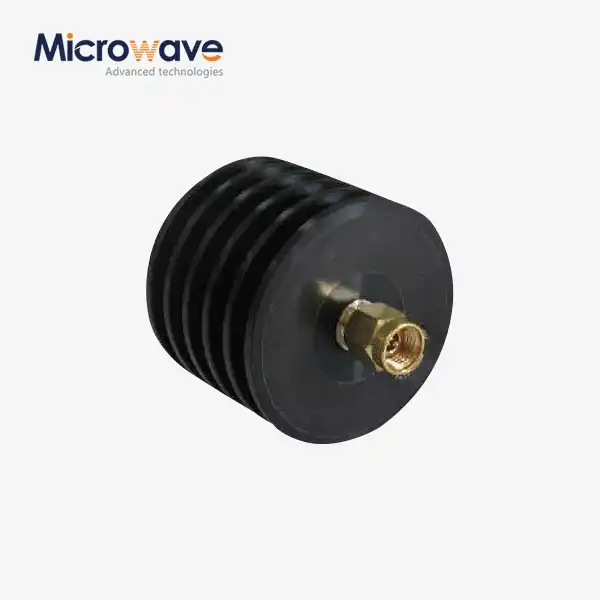
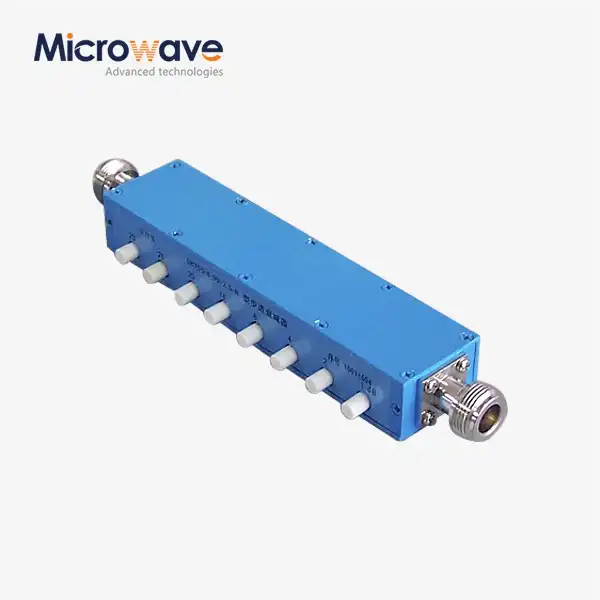
_1733809032116.webp)
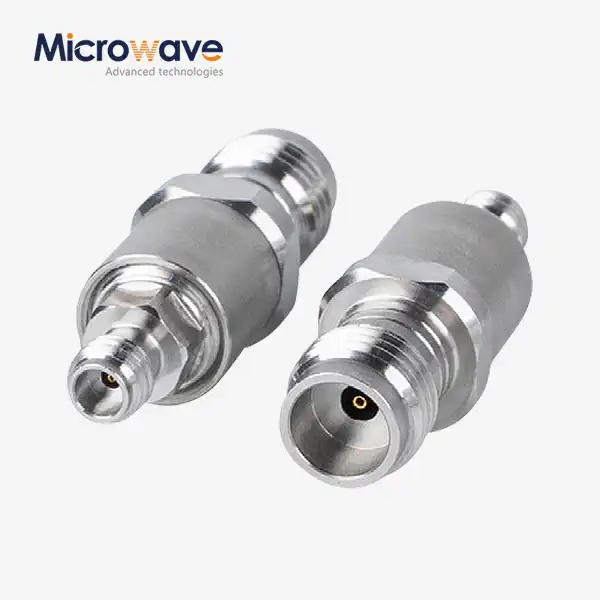
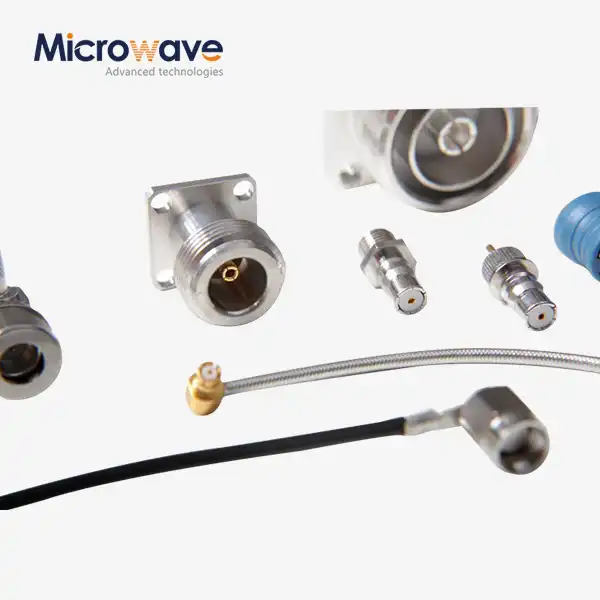
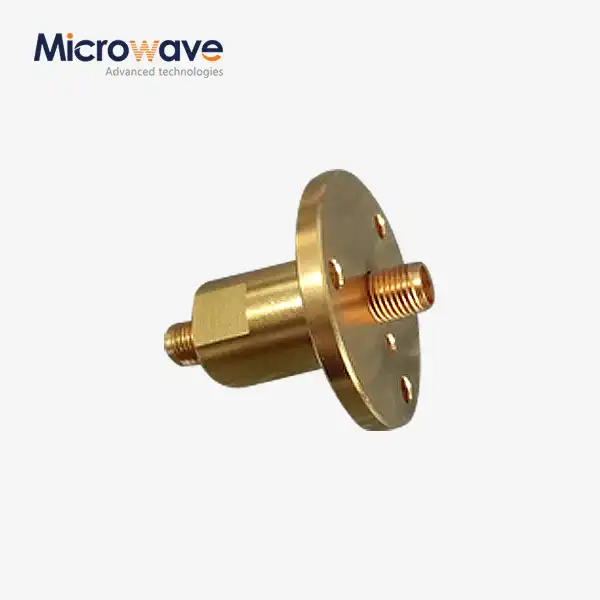
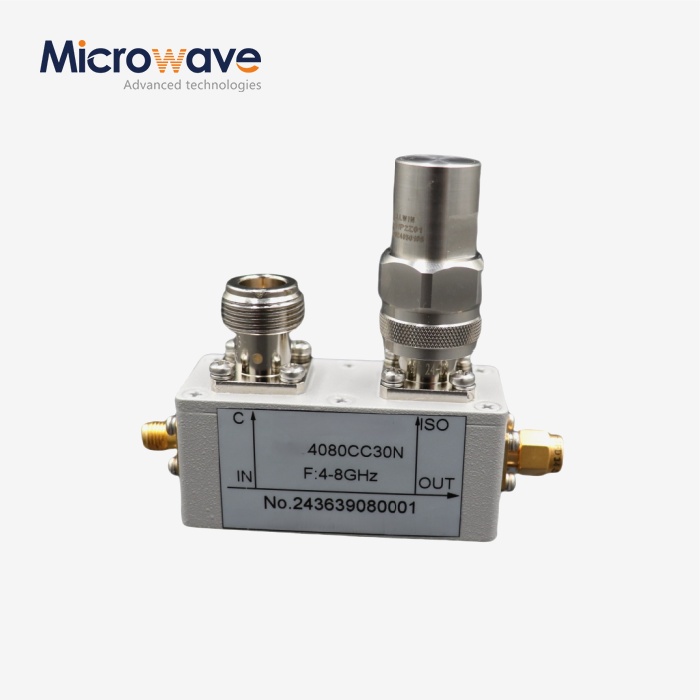
_1733738410152.webp)
